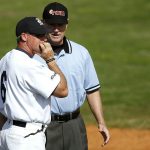If you’re the proud owner of a Ford Focus RS and love to push its high-performance capabilities to the maximum on the track, safety should always be your top priority. One way to significantly enhance your safety is by installing a racing harness. This piece of equipment ensures you stay securely in your seat during those high-speed turns and sudden stops.
Ditch the standard seat belts and upgrade to a racing harness. It’s a must-have if you’re looking to participate in racing events or if you regularly drive at high speeds on a track. This guide will provide you with a step-by-step procedure to install a racing harness in your Ford Focus RS for increased safety on the track.
Topic to read : What’s the Ideal Method for Adjusting the Valves on a Motorcycle Like the Kawasaki Ninja ZX-10R?
What is a Racing Harness and Why Do You Need it?
A racing harness, also known as a safety harness, is a seatbelt system designed for high-performance driving. It usually comes with five or six points of attachment to the vehicle’s frame. These points are typically located at the shoulders, sides, and between the legs. This provides a more secure hold on the driver, reducing the risk of injury in case of a crash or sudden stop.
A racing harness is especially crucial if your Ford Focus RS is equipped with a roll cage or if you’re planning to participate in racing events. It holds the driver in place, preventing movement during high-speed turns and jolts. This allows for better control over the vehicle and reduces the risk of injury during high-speed impacts.
Also to see : How to Choose the Right Off-Road Tires for a Toyota Land Cruiser for Desert Terrain?
Choosing the Right Racing Harness for Your Ford Focus RS
Before you start the installation process, it’s crucial to choose a racing harness that fits your Ford Focus RS perfectly. Here are the main factors you should consider:
- FIA or SFI Certification: Always opt for a harness that has either FIA (Fédération Internationale de l’Automobile) or SFI (Safety Foundation Inc.) certification. These organizations set the safety standards for racing equipment, and having one of these certifications guarantees that your harness meets the highest safety standards.
- Number of Points: A racing harness comes with either a 4-point, 5-point, or 6-point design. The number refers to the points where the harness attaches to the vehicle. A higher number offers more security. However, a 5-point harness is typically adequate for most racing conditions.
- Harness Material: The material of the harness should be durable and resistant to wear and tear. Nylon is a common material used for racing harnesses due to its high tensile strength and durability.
Installing the Racing Harness in a Ford Focus RS
Once you have purchased the right racing harness, you can proceed with the installation. Here’s a step-by-step guide:
- Remove the Stock Seatbelts: Start by removing the stock seatbelts from your Ford Focus RS. You can do this by unscrewing the bolts that hold the seatbelts in place. Keep these bolts in a safe place as you will need them later.
- Install the Harness Bar: Install the harness bar if your vehicle is not already equipped with one. The harness bar is where the shoulder straps of the racing harness will attach. It should be installed horizontally behind the front seats.
- Mount the Harness: Now, it’s time to mount the harness. Attach the shoulder straps to the harness bar. Ensure that the straps are straight and not twisted. Attach the lap belts to the existing seatbelt mounting points using the bolts you kept aside earlier.
- Secure the Crotch Strap: The crotch strap should run from the buckle of the harness, between your legs, and attach to an anchor point behind the seat. This anchor point can be an existing bolt on the car’s frame or a new hole drilled into it.
Always remember to adjust the harness straps to ensure they fit snugly. A properly fitted harness should be tight but comfortable.
After Installation: Checking & Maintenance
After successfully installing the racing harness in your Ford Focus RS, it’s crucial to regularly check and maintain it for optimal performance and safety.
Before you hit the track, always check the harness for signs of wear or damage. This includes frayed straps, loose bolts, or a jammed buckle. If you notice any of these issues, replace or repair the damaged parts immediately.
Regular cleaning is also essential. A clean harness not only looks good but also extends its lifespan. Use mild soap and warm water to clean the harness straps and let them air dry.
Adhering to these guidelines and regularly maintaining your racing harness ensures that it provides optimal safety while you enjoy the adrenaline rush of driving your Ford Focus RS on the track.
Harness Adjustment and Comfort
A vital step that many overlook after a racing harness installation is the proper adjustment for comfort and safety. Remember, the goal of the harness is not just to keep you in place during a high-speed or sudden halt but also to ensure you’re comfortable during the drive.
Post-installation, begin by adjusting the shoulder straps. They should be tight enough to hold you back in your seat without causing discomfort. The lap belt should be snug over the hips but not restrictive. The crotch strap should be tight enough to keep the lap belt in place but not cause discomfort.
It is crucial to understand that a racing harness that does not properly fit or is uncomfortable can lead to distractions on the track, affecting your performance. An ill-fitted harness can also fail to provide the desired safety during a crash. Therefore, take a moment to adjust all straps appropriately.
A useful tip is to wear the same clothing during the adjustment that you usually wear while racing. This will ensure the harness fits perfectly even during the actual race.
Conclusion
Installing a racing harness in your Ford Focus RS is not just an upgrade for your vehicle, but a significant enhancement of your safety while racing. A properly selected and installed racing harness can significantly reduce the risk of injury during high-speed impacts. However, it’s essential to remember that a harness is only as good as its installation and maintenance.
Consistently checking for wear and tear, ensuring a clean harness, and making certain all straps are properly adjusted, are key elements to harness safety. Take the time to ensure that all points are securely fastened and comfortable.
With a correctly installed racing harness, you not only guarantee an extra level of safety but also raise your confidence levels on the track. An investment in safety is an investment in your racing future. So, don your helmet, rev up your Focus RS, and let the racing harness keep you secure as you navigate the thrilling twists and turns of the racing track.











